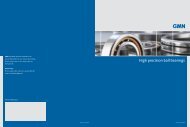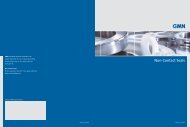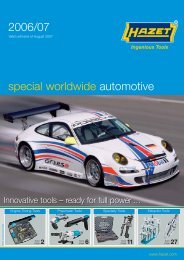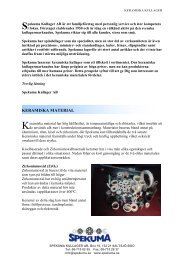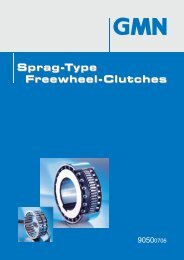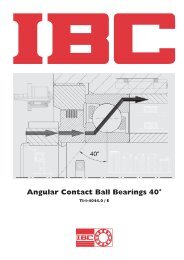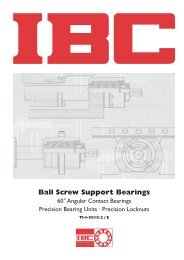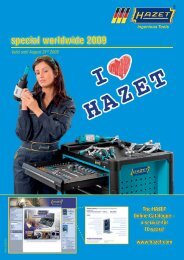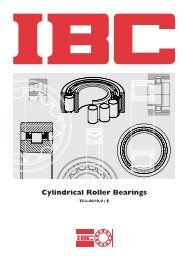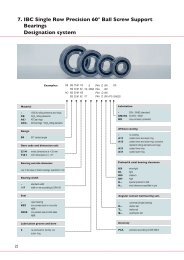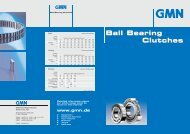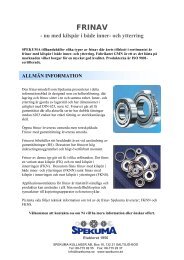You also want an ePaper? Increase the reach of your titles
YUMPU automatically turns print PDFs into web optimized ePapers that Google loves.
Materials for Rings and Balls<br />
Our ball bearings are made from chrome<br />
steel (SAE 52100) or from stainless steel<br />
(X65Cr13). Ceramic balls can be used in<br />
both versions if required (hybrid ball<br />
bearings).<br />
Hybrid Ball Bearings (steel rings and<br />
ceramic balls) are above all used in dental<br />
technology, in spindle bearings and vacuum<br />
technology.<br />
The chrome steel (1.3505/SAE 52100) used<br />
is very good heat treatable and maintains a<br />
high level of strength when hardened. Ball<br />
bearings made from this kind of steel have<br />
an excellent service life at working<br />
temperatures up to 170 °C (338 °F).<br />
The stainless steel (1.4037) is a martensitic<br />
steel which can be used at a working<br />
temperature of up to 200 °C (392 °F) without<br />
noticeable hardness loss.<br />
Improvements in steel <strong>product</strong>ion and heat<br />
treatment allow the load ratings of both<br />
steels to be the same.<br />
Prefix – SS<br />
DIN 100Cr6 X65Cr13<br />
DIN 1.3505 1.4037<br />
SAE 52100<br />
AFNOR 100Cr6<br />
C % 0,95 - 1,10 0,60 - 0,75<br />
Si % 0,15 - 0,35 1 max.<br />
Mn % 0,25 - 0,45 1 max.<br />
P % 0,03 max. 0,04 max.<br />
S % 0,025 max. 0,03 max.<br />
Cr % 1,35 - 1,65 12 - 14<br />
Mo % – 0,75 max.<br />
Table 1: Chemical analysis<br />
Our technical support will be pleased to<br />
provide you with information on the chemical<br />
resistance of above mentioned materials.<br />
43




